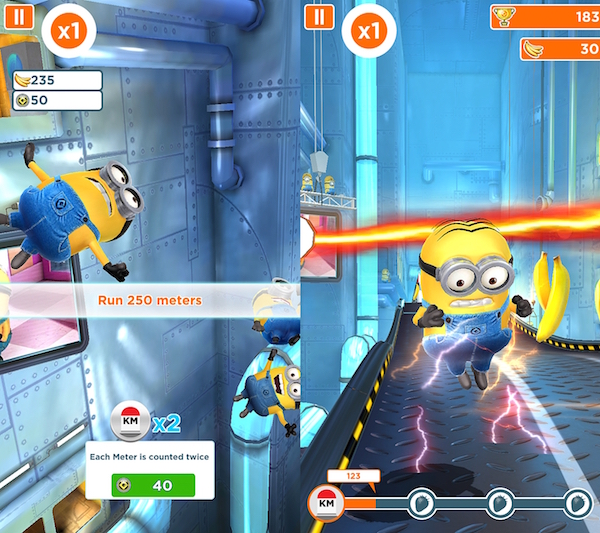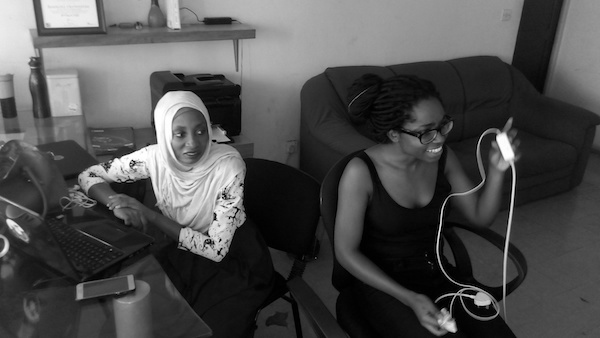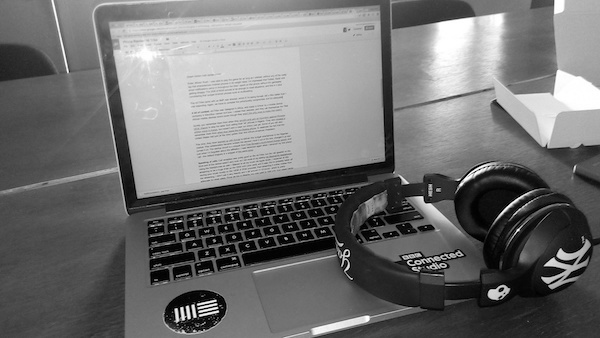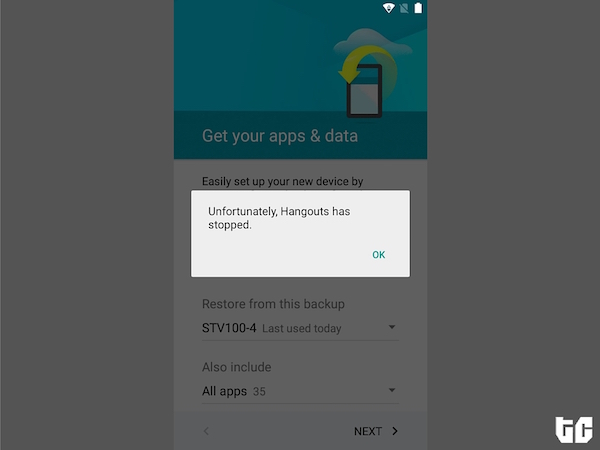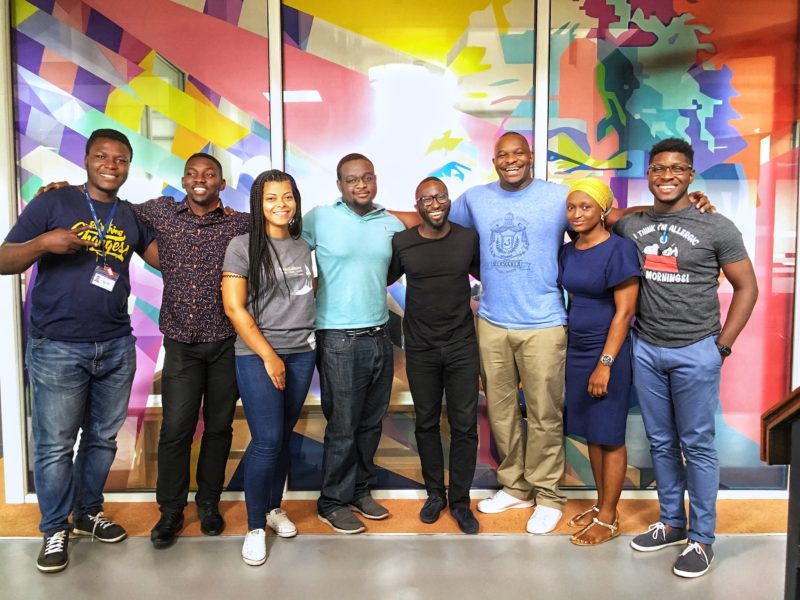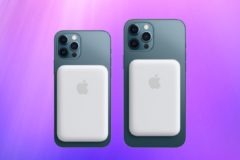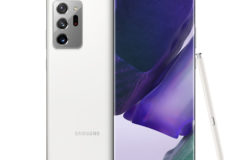Disclaimer: I should probably state at this point that right before testing this phone out, I reviewed the Blackberry Priv, so it took a few days to “recalibrate” my sensors. Rest assured my objectivity was not compromised in the making of this dossier.
‘Nuff said. Let’s dive right in.
First Impressions. The mi-Tribe came in a WIDE, light grey box with a non-repetitive pattern (possibly a subtle nod to the ‘Tribe’ name). I thought it looked…different and I said to myself, “with a case this huge, it better come with a 10,000mAh powerbank and like 3 extra batteries”.
Sadly, it did not. What I got instead was the usual: the phone itself, earplugs, a micro-USB charger, owner’s manual and a whole lot of air. Seriously. There were three sub-boxes inside the main box, each containing a different set of items.
The thing is, all these items could have fit easily into just one of the boxes so it feels like a waste of space. My guess is that the box was designed this way as a differentiator from the many other devices in the same weight class.
The phone body itself is only a little bigger than an iPhone 6. It looks and feels like a pumice scrub stone, which is pretty great for grip but not necessarily for aesthetics. Then again, the target demographic is probably more worried about the phone lasting long, than looking nice.
It looks like a box, asides from the rounded edges, and both the 3.5mm audio jack and micro-USB ports are on the top of the device. This helps when you want to listen to music via headphones and leave the phone in your pocket. It felt pretty light, too. It’s larger in size than my Lumia 630, yet it’s more than a tad lighter.
Hardware performance. The Tribe came with 2GB of RAM and a 1.3GHz Quad Core processor, which is pretty decent hardware for the price class it belongs to. It wasn’t stated who the processor manufacturer is, but my bet is that it’s a MediaTek chipset. I decided against running the usual Subway Surfer/Asphalt 8 test, and I picked something a bit…different, this time around.
Enter, Minion Rush. I was able to play the game for as long as I wished, without any of the nasty lag that characterizes Android phones in its weight class. I’m impressed that Twitter, Slack and email notifications came in throughout the time I spent on this phone without the gameplay getting choppy. The 2GB of RAM proved to be enough in most situations, and this is a plus considering that budget Android phones suck at multitasking.
The mi-Tribe came with an 8MP rear shooter, which if I’m being honest, did exactly as I was expecting. Again, we have to consider the price/quality compromise, but it’s adequate for most users. Err…at 2MP, the front camera isn’t anything to write home about. Even though megapixel counts don’t matter so much, it’s a bit difficult to make a case for the one attached to the mi-Tribe. Grainy, underexposed shots everywhere but under bright sunlight.
Neither of them will win any awards, so Snapchat is a no, no. They don’t look as bad in grayscale though.
A bit of context. mi-Tribe was ‘designed in Africa, and made in China’ by a mobile device company in Mauritius named mi-Fone. I visited their website, and they call themselves the “first African mobile devices brand (even though they aren’t the only ones to make that claim).
Surely, you remember them from when they sought (and got) an injunction against Chinese OEM, Xiaomi to stop the latter from selling their ‘Mi’ phones in Nigeria. They also initiated a similar move in Kenya, but haven’t won a clear cut victory just yet. Some of you will also remember them from when they made the mi-Obama phone, to celebrate the fact that the United States had just (at the time) gotten their first African-American President.
This time, they have teamed up with Konga to deliver this budget smartphone to the Nigerian market. This collaboration became evident the second I took it out of the box, charged it up and turned it on. The startup sound is a snippet from Tiwa Savage’s much-famed Konga advert. And just when I’d forgotten about the affiliation, I was reminded again when I received my first phone call – the default ringtone is a snippet of the same song.
Speaking of calls. Call reception was pretty good on the mi-Tribe, but the call speaker on the front end of the device wasn’t very loud, so I did most of my talking via Skullcandy headphones. Using the headphones as well, I listened to all my music via Apple Music. I expected all this streaming to be a huge drain on the 2300 mAh juice pack, and it was. You’re probably better off storing your music locally on the 16GB of ROM provided, than streaming it online. Asides from the streaming, I didn’t use it very heavily and it did around 11-13 hours – which is pretty adequate for most users. Since we live in Nigeria, you may want to hold onto your power banks though. Light no dey.
Did I mention that it has a memory card slot (expandable by up to 32GB), for those of you who think 16GB is too small? (Hint: I don’t).
On the software side of things. You know those UI skins OEMs like to chuck onto their devices to make them look different from everyone else’s? I’m not a big fan of them. These skins are usually not as good-looking as their creators think, and they only end up slowing the phones down. Thankfully, there was none of that on the mi-Tribe (whew); it runs stock Android 5.1 Lollipop. I didn’t notice any bugs while I interacted with it, except maybe once when Hangouts crashed mysteriously while I was setting the phone up for the first time.
The mi-Tribe sports a 5-inch IPS screen with a resolution of 720 x 1280 (when in portrait), and I thought it was…adequate. It wasn’t as oversaturated as a number of low-end Android phones I’ve used, but it will win no awards. Again, if you take this information and put it in the context of the demographic the mi-Tribe is targeted at, you’ll realise that they generally wouldn’t be too fussy about the screen, and honestly? neither should I.
I often had to choose between speed and accuracy when typing on the mi-Tribe’s 5-inch display and this is generally not a compromise I’m comfortable making. Safe to say I did not enjoy typing on the display. Do not attempt to write longform posts on Medium or Google Docs.
Verdict. I spent about 10 days interacting with it and after the first few days, the mi-Tribe became more of a mobile hotspot for my laptop and my iPad Air 2 than a daily driver. What does this tell me? Power users like me will like the mi-Tribe as a second device; for making phone calls, SMS, internet hotspot, and other low-level tasks, but not much else. However, the users who this device is targeted at will appreciate it for its price, and its apparent durability.
The founder of mi-Fone, Alpesh Patel left his position as the Director of Sales (Africa) at Motorola in 2008 to “place millions of low cost smartphones into the hands of the average African consumer”. When we put Alpesh’s vision into context, is the mi-Tribe a step in the right direction? I certainly think it is, and that’s all that matters.












